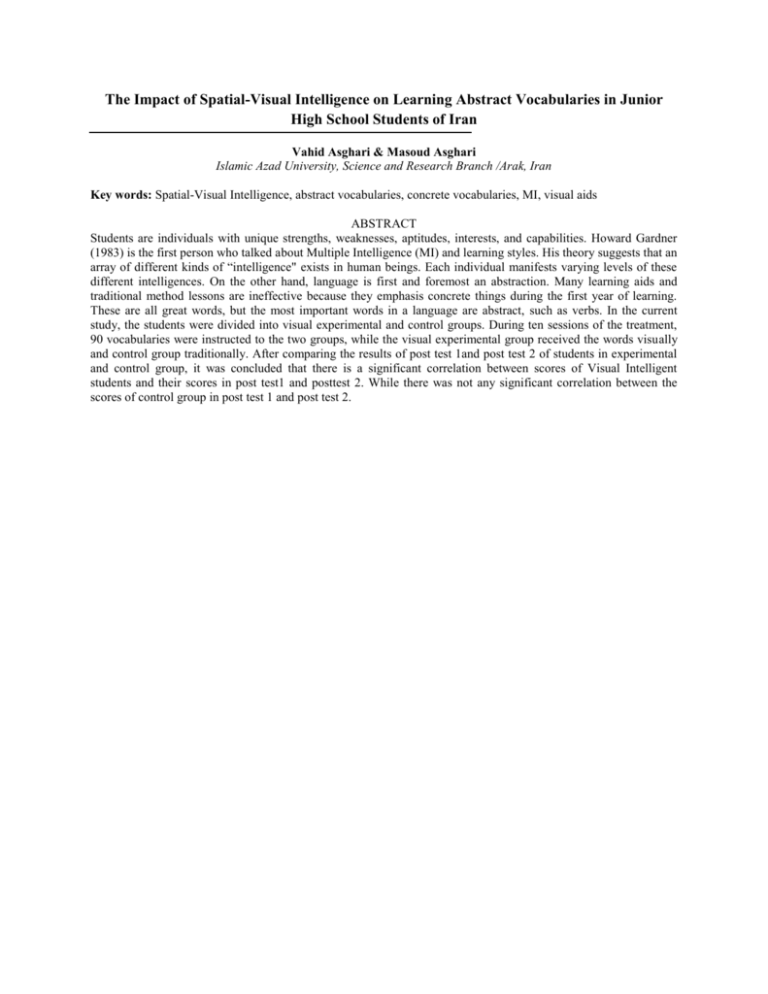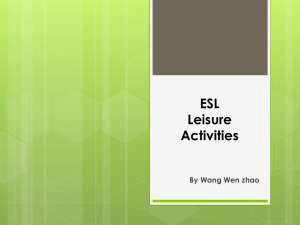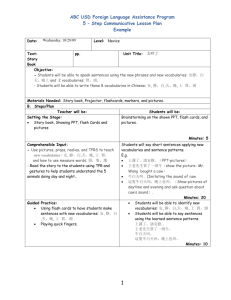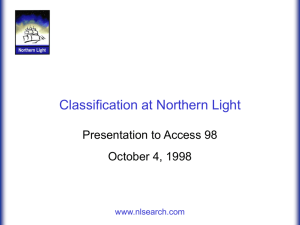intelligence abstract
advertisement

The Impact of Spatial-Visual Intelligence on Learning Abstract Vocabularies in Junior High School Students of Iran Vahid Asghari & Masoud Asghari Islamic Azad University, Science and Research Branch /Arak, Iran Key words: Spatial-Visual Intelligence, abstract vocabularies, concrete vocabularies, MI, visual aids ABSTRACT Students are individuals with unique strengths, weaknesses, aptitudes, interests, and capabilities. Howard Gardner (1983) is the first person who talked about Multiple Intelligence (MI) and learning styles. His theory suggests that an array of different kinds of “intelligence" exists in human beings. Each individual manifests varying levels of these different intelligences. On the other hand, language is first and foremost an abstraction. Many learning aids and traditional method lessons are ineffective because they emphasis concrete things during the first year of learning. These are all great words, but the most important words in a language are abstract, such as verbs. In the current study, the students were divided into visual experimental and control groups. During ten sessions of the treatment, 90 vocabularies were instructed to the two groups, while the visual experimental group received the words visually and control group traditionally. After comparing the results of post test 1and post test 2 of students in experimental and control group, it was concluded that there is a significant correlation between scores of Visual Intelligent students and their scores in post test1 and posttest 2. While there was not any significant correlation between the scores of control group in post test 1 and post test 2.











